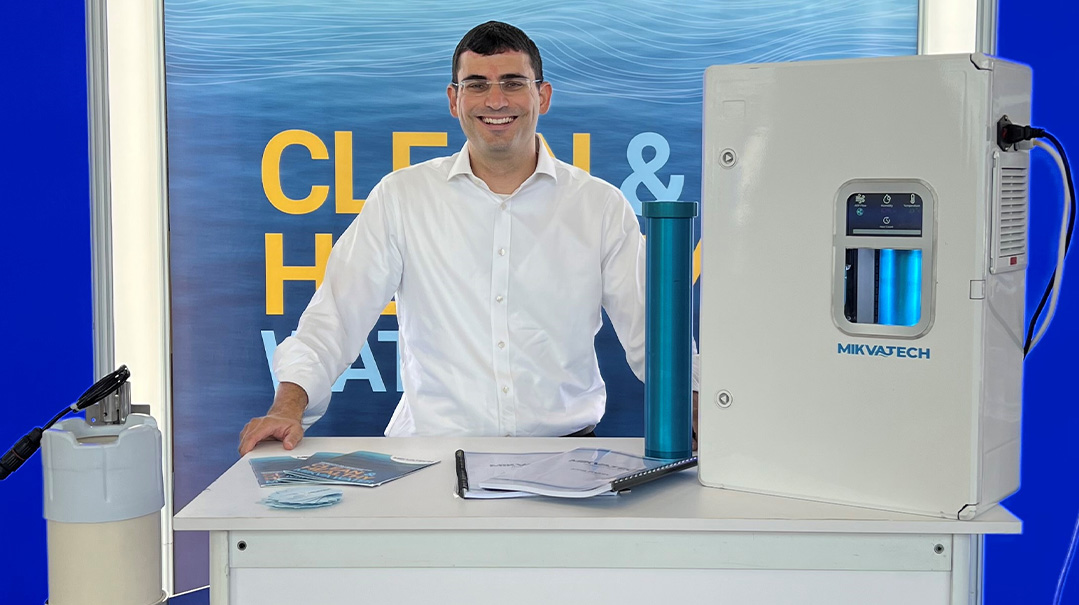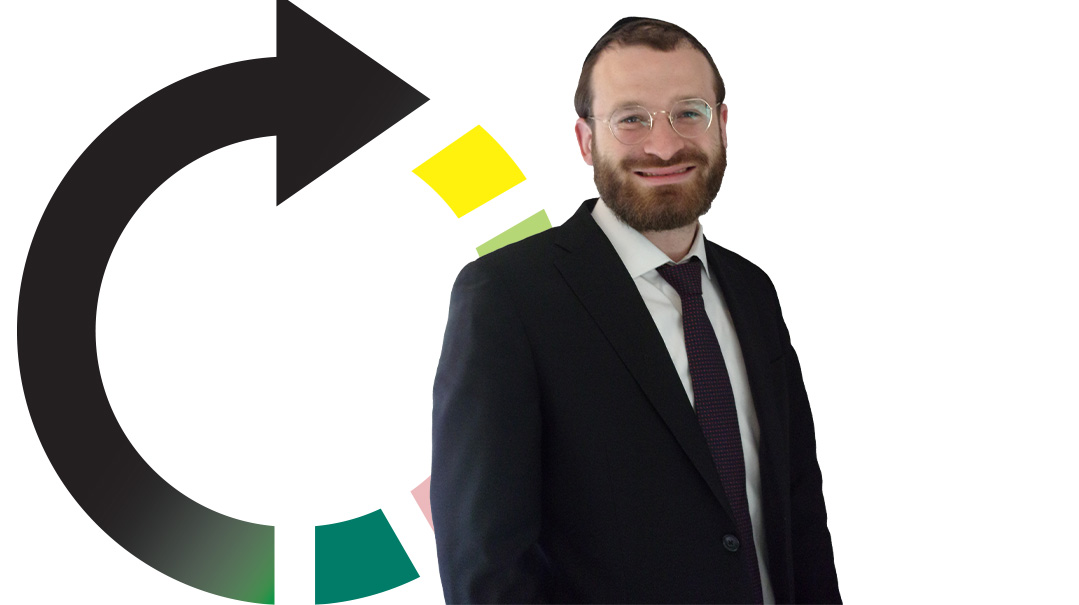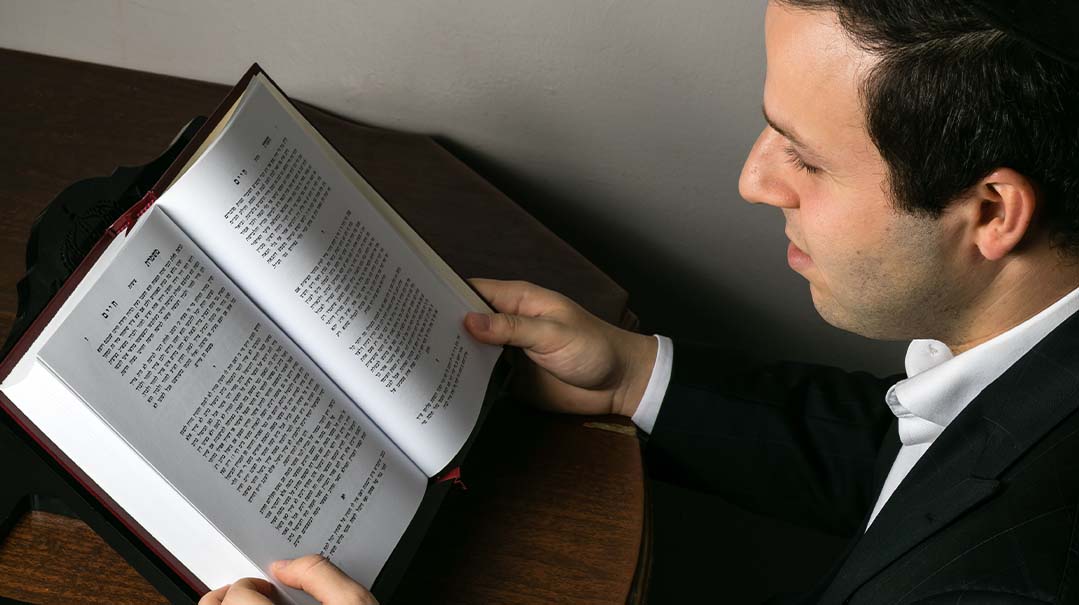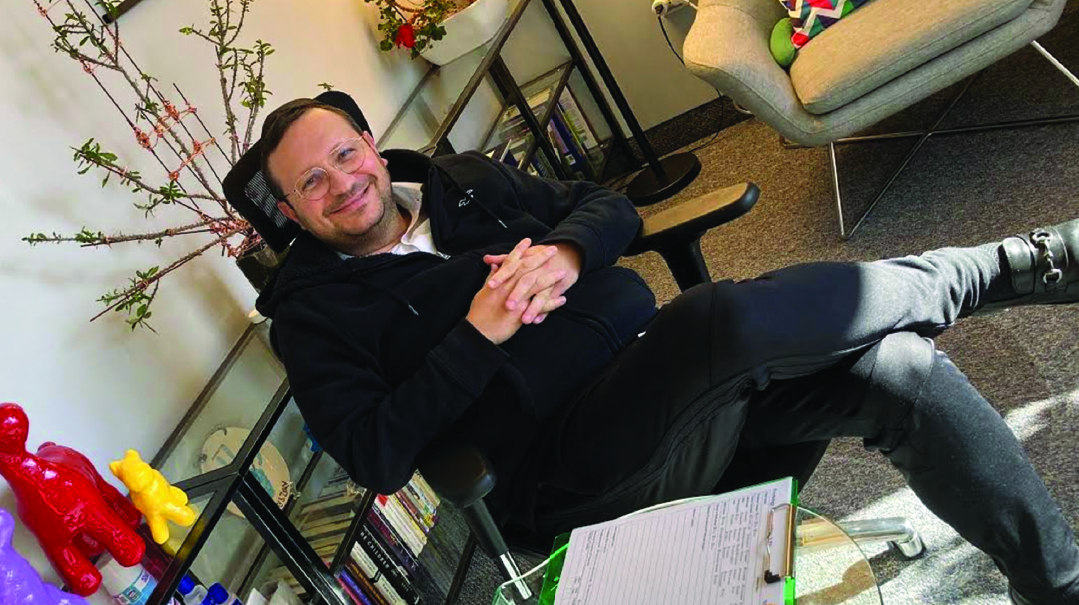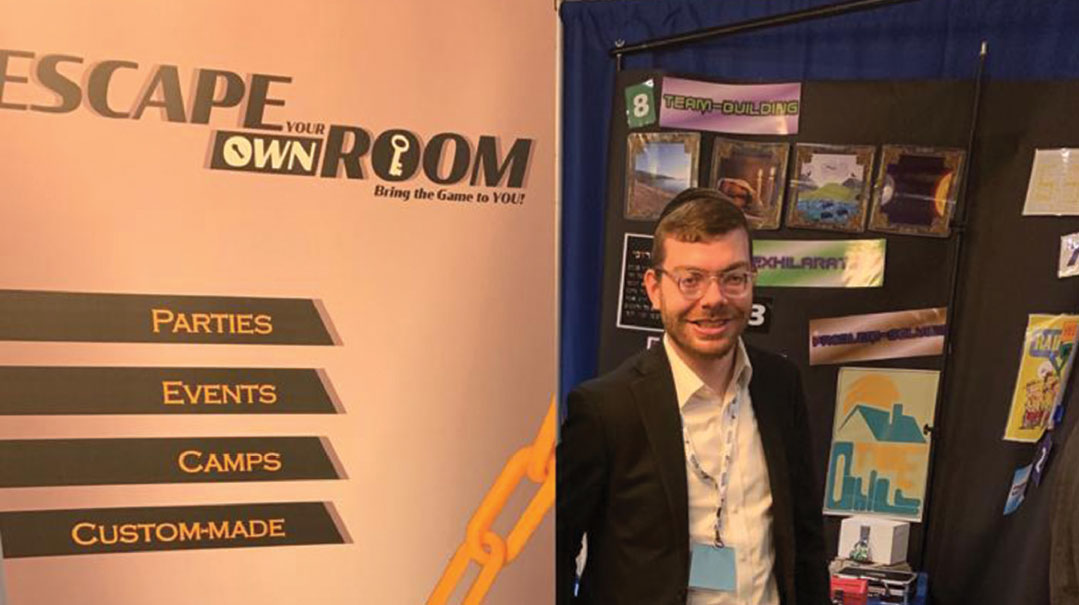A Day in the Life of Ezra Lubelsky

What I do
I record nusach for all tefillos throughout the year: Shabbos, Yom Tov, Rosh Chodesh, and Yamim Noraim, and it includes all piyutim and yotzros.
What that means
My aim is to provide high-quality, clear, and accurate nusach for new baalei tefillah to learn, for experienced baalei tefillah to perfect and improve, and for the rest of the world to listen, to get inspired, and to get into the Yom Tov spirit. Each word has its specific place and nusach — words of tefillah shouldn’t be swallowed — and my mission is to help with that. A well-prepared baal tefillah is able to concentrate on the peirush hamilim and not on how to say or sing the words because he knows that already. The Internet is full of recordings by chazzanim and baalei tefillah who uploaded their nusach, sometimes with a choir or even with music, but most of them target the Mizrachi nusach or the Yekkishe nusach, and the old European heimish nusach is almost nowhere to be found.
How I got started
Creating this project was my dream since I started davening more than 30 years ago. It took me months to learn the nusach hatefillah — I remember I had to listen to bits and pieces of unclear recordings to stitch together a warm and batamter nusach, as a complete nusach wasn’t available. I had grown up hearing the davening of Rabbi Pinchos Breuer and Rabbi Josef Roitenbarg of Antwerp, and their nusach became the foundation of my davening. I perfected it by gathering tapes and recordings from numerous sources. My hope is that my website helps spare other baalei tefillah from having to go through the stress and tiresome work I did.
Technically speaking
When I started, I just recorded on a simple voice recorder. As you can imagine, the quality was very poor — I knew I needed to upgrade to a proper home studio setting. Finding the right equipment and learning how to use it meant many hours of researching, learning, and failing. But it worked, because I learned how to record high-quality recordings that are pleasant to listen to.
Calling in the experts
From time to time, there are questions about what a particular minhag is or when and how a tefillah is said — what piyutim are said and which ones are left out, do we say K’gavna when Yom Tov falls on Friday night, do we say “Hoshana l’maan… hoshana,” or just “Hoshana l’maan...” without repeating the word “Hoshana” at the end. When I have those questions, I ask for input from veteran gabbaim and baalei tefillah.
Professional references
I enjoy an exceptional closeness to the Gaavad of Yerushalayim, Rav Tovia Weiss, who considers himself an old friend of my family and has visited and stayed at my home in Zurich on numerous occasions. Growing up as a yasom in Antwerp, I went in and out of his house like a child of his, it was similar to a father-son relationship. I’ve always davened at the amud when I visited him, he wanted me to sing at his chuppah and chasunah 21 years ago. Rav Chaim Kreiswirth ztz”l, the Antwerp Rav, also participated in the wedding, and he invited me on the spot to become the chazzan in Antwerp’s big shul.
I started singing before I began to speak! My family would tell me I’d lie in my cradle singing my favorite song, “Pischu Li,” to myself. I’d sing it over and over again while my parents and older siblings would listen at the door. When I was four, we moved from England to Antwerp, and I joined the Pirchei Antwerp choir — I was the youngest in it.
And I started davening from the amud when I was in yeshivah in Gateshead and Slabodka — I served as a baal tefillah. I also led Shabbos zemiros. At age of 22, the Agudas Achim Kehilla in Zurich, which is headed by Rav Shaul Breisch, asked me to officiate as the baal tefillah for the Yamim Noraim. I was too young and unworthy to accept such a holy position, but the late Rav Moshe Soloveitchik ztz”l strongly encouraged me to use my talents and daven despite my age. Numerous years later, Rav Moshe told his son, “Learn nusach from Ezra.” That was about 30 years ago, and since then I’ve been davening all Yamim Noraim tefillos all over Zurich, including at the IRG, the Adass Yeshurun yekkishe kehillah. I learned the yekkish nusach and songs, and I switch to the yekkish pronunciation of the cholom — the chaulom — which means I davened Shacharis with the yekkish nusach and Mussaf in the normal “welts nusach.”
My role model
As a schoolboy, I was deeply inspired by the warm davening of Chazan Yossele Rosenblatt. I was nicknamed by my friends Yossele Lubelsky or Ezra Rosenblatt. Going to sleep at night was always with Yossele playing in the background, and in the morning, the first thing I did was turn round the record or tape, press play, and then wash negel vasser. I remember having friends come play on Sunday afternoons. I’d play Yossele Rosenblatt on the old record player to show them the beauty of his singing by explaining why he used a certain tenuah that would make sense according to the meaning of the words. I’m not sure how much they enjoyed it….
Down the road
Currently, I give one tune for each section of davening. My vision is to one day have a selection of fitting songs for each tefillah we sing. For example, a list of niggunim for Lecha Dodi, Keil Adon, Mimkomcha, Hallel, and so on, and it should also allow for people to submit their own ideas, creating a big databank of heimish niggunim.
Common questions — People ask the usual: questions about a nusach for a particular tefillah or piyut; which nusach to use, or if I can create a new recording for a tefillah that’s not up yet; if I have a good niggun that could match a particular tefillah.
Busy season — The website gets the most traffic from Av to Tishrei — it’s peak time to listen and learn nusach.
Strategic partner — My son, Aron Mordechai, funds NusachTefillah.com. He invested in my home studio and designed the website, and most important, he updates the site, ensuring that the most recent recordings are uploaded and that it’s functioning properly.
Day job — I teach limudei kodesh to kids with learning disabilities and also specialize in teaching children with reading difficulties to read alef-beis, which is of course the foundation of tefillah. I perform in choirs at dinners and lead many chuppahs and perform at simchahs as well.
Memorable feedback — I’ll never forget when a user whose wife was in the hospital wrote to me that his wife, who couldn’t attend shul because of her illness, listened to my davening on the website before Yom Tov, and that brought her into the Yom Tov spirit.
(Originally featured in Mishpacha, Issue 726)
Oops! We could not locate your form.

